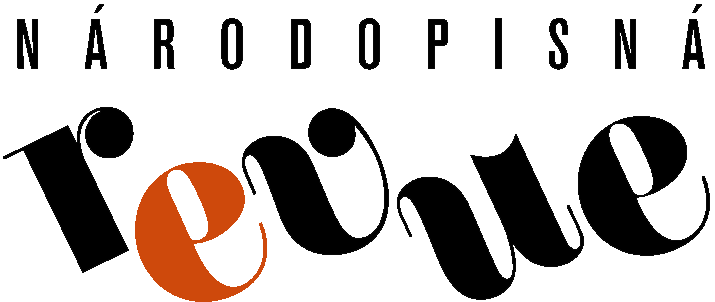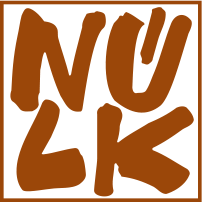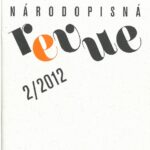Journal of Ethnology 2/2012 has chosen the research of folk clothing as its major theme. Petra Mertová pays attention to the types of textile materials (An Overview of Types of Wool Fabrics on Men’s Folk Garments in Moravia between 1850 and 1950), Klára Binderová writes about blueprint and its applications (Changes in the Production of Jochs´ Blueprint Workshop in Strážnice between 1906 and 1993), Lenka Drápalová presents the men’s waistcoats as a part of folk costumes around Rožnov pod Radhoštěm (Men’s Garment Called Brunclek in the Region around Rožnov - Identification of a Specific Garment Variant), Daniel Dědovský explains the symbol of Czech national dress from 1848 (Čamara in European Culture (an ethno-linguistic study). In Other Studies section, Martin Novotný pays attention to the building material dominating in the ethnographic area of Hana (Clay as a Building Material (an example from the ethnographic area of Hana in Central Moravia).
In Stopping with Photo column, Alena Křížová publishes postcards with folk costume motifs from the 1920s. Barbora Machová conducts an interview with Bulgarian ethnologist Zoranč Malinov.
Social Chronicle remembers the anniversaries of music editor Jaromír Nečas (born 1922), ethnologist and musicologist Marta Ulrychová (born 1952) and ethnologists Helena Bočková (born 1952) and Helena Mevaldová (born 1952), and publishes obituary for folklorist Dagmar Klímová (1926-2012). Other regular columns include reports from conferences and exhibitions, reviews of new books, and actual news from the branch.
An Overview of Types of Wool Fabrics on Men’s Folk Garments in Moravia between 1850 and 1950
Traditional clothing worn by the inhabitants in Moravian villages has been the matter of ethnologists´ interest for more than one hundred years. In expert literature, one can find descriptions of techniques related to spinning, weaving, knitting, fulling, and other textile techniques. The ways of extracting and processing the natural raw materials used for making the traditional textile materials, i.e. those made from flax, hemp, cotton, silk and wool yarns, have been documented. It was not only ethnologists but also historians and regional researchers, who - in their essays and monographs - paid attention to the historical background of textile production and its legal and social framework. Available are quite many reports on textile production as well as descriptions of garments worn by the village inhabitants in Moravia. Therefore, it should not be difficult to summarize the fabrics used for making the folk clothes in Moravia within the period from the late-19th century until the end of the first half of the 20th century. The submitted text constitutes an overview just - for the time being - of wool fabrics documented in the literature in connection with the men’s folk garments from Moravia between 1850 and 1950. The listing is accompanied by the characteristics of fabrics; it has been compiled by means of the encyclopaedic handbooks and ethnographic texts of the time as well as the modern ones. The listing shall be completed by photo documentation presenting the concrete fabrics along with the constructive and technological analysis thereof. Such documentation could help the researchers identify the textile fabrics, especially in case of museum exhibits.
Changes in the Production of Jochs´ Blueprint Workshop in Strážnice between 1906 and 1993
The essay speaks about the almost ninety-years-long history of the blueprint workshop in a small Moravian town Strážnice, which is run by family Joch. It submits brief information about blue-print tradition in the region as well as about the conditions for workshop´s work; it deals also with peculiarities of the blue-print production at this dying workshop between 1906 and 1951, comparing them with the production in the following period (1954-1993). Within the aforementioned two periods, Jochs´ blueprint workshop was going through significant changes. In its original form, the workshop produced blueprint only for a narrow group of inhabitants living in rural area around the town of Strážnice. They used the blueprinted fabrics as a usual consumption material for their garments. The blueprint motifs were adapted to this way of use as well. With the change of political regime, the workshop became in 1954 a part of a centralized organization taking care for the so-called folk artistic manufacture. Under the head of this organization, the blueprint fabrics were modified in products maintaining their traditional basis but replying to modern requirements in the branch of textile production. The products were intended for all those appreciating especially the cultural value of a new piece of work.
Men's Garment Called Brunclek in the Region around Rožnov - Identification of a Specific Garment Variant
Through geographical, historical, economical, social, and cultural influences, the traditional dress in Rožnov and its environs developed in a typical form of clothing, which differed from other types of Wallachian folk costume. Its appearance has been documented by written, picture and tangible sources since the late-18th century, as well as by expert literature. Nevertheless, a variant of men’s brunclek with different solution of the back part escaped the attention of the respondents and researchers. The author of this study identifies the above type of brunclek as a brunclek of Rožnov type with the double Princess cut of the back part. Based on comparing works in museum depositaries, the study offers the sight of making and using this different form of brunclek including the cut modification.
Čamara in European Culture (an ethno-linguistic study)
The garment known in Bohemia as “čamara” has been documented since the High Middle Ages in the European culture of clothing; its roots date back to Oriental civilizations. In European languages and their dialects, there are lots of terminologically relative modifications relating to the garment in question. This garment found its way into the culture of clothing of several continents gradually; it was worn by members of all social classes - as a part of folk costumes, feudal lords´ clothes, dress and jerkins of church dignitaries within both the Catholic and Protestant environment; in many places, it has survived in different forms until today. Although in particular cultures and periods čamara differs in the cut and applications, it has always kept its function as an overcoat. The material shows notable identities as well. Mostly the garment is made from the fabric of animal origin - silk, wool, hair, or fur. The name “čamara” might be derived from the name of sheep or goat fur, which occurs in the languages in Near East, Northern Africa, and South Europe. Polish word czamary from the turn of the 18th and 19th centuries shows the influence of especially Hungarian and Oriental environment. These czamary were a significant source for the Czech designers of national formal dress. The continuity of this garment can be traced back to the Renaissance fashion in Italy and Spain.
Clay as a Building Material (an example from the ethnographic area of Hana in Central Moravia)
The essay speaks about some aspects of mining and preparation of building materials used for constructions of earth buildings in Central Moravia, in the ethnographic area of Hana. Based on the sources of narrative nature and the literature, we have depicted the already extinct tradition within the above region. We pay attention to the way in which the raw material was extracted and processed in connection with the intended kind of bricklaying. In Hana, they used mainly the pre-shaped building units - clay lumps and unburnt bricks. The specific role of brickmakers and builders of earth buildings as well as their position within the village community are taken into consideration as well. The attention was paid also to the maintenance of these buildings, which was based on several acts repeated regularly in certain periodical intervals.



